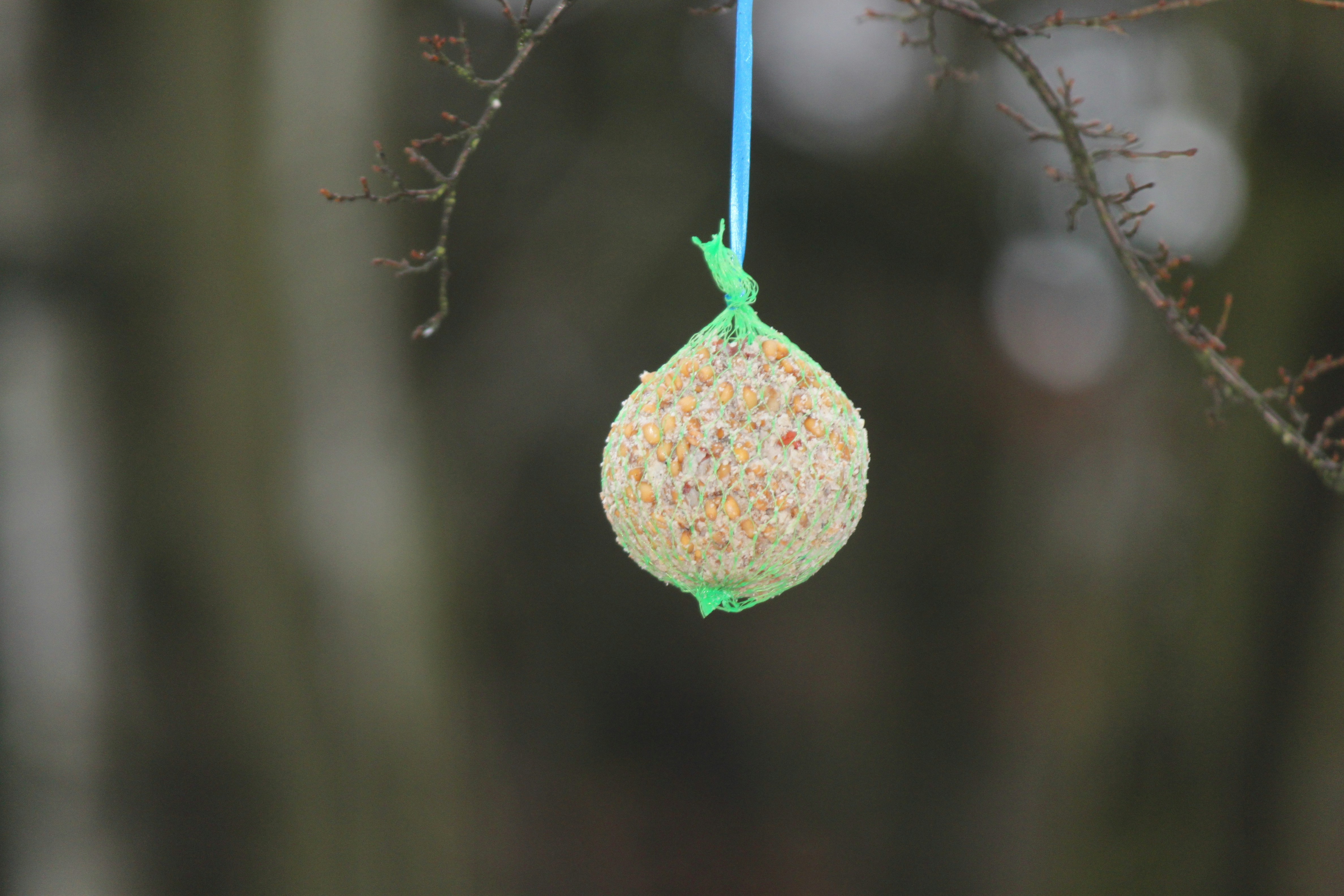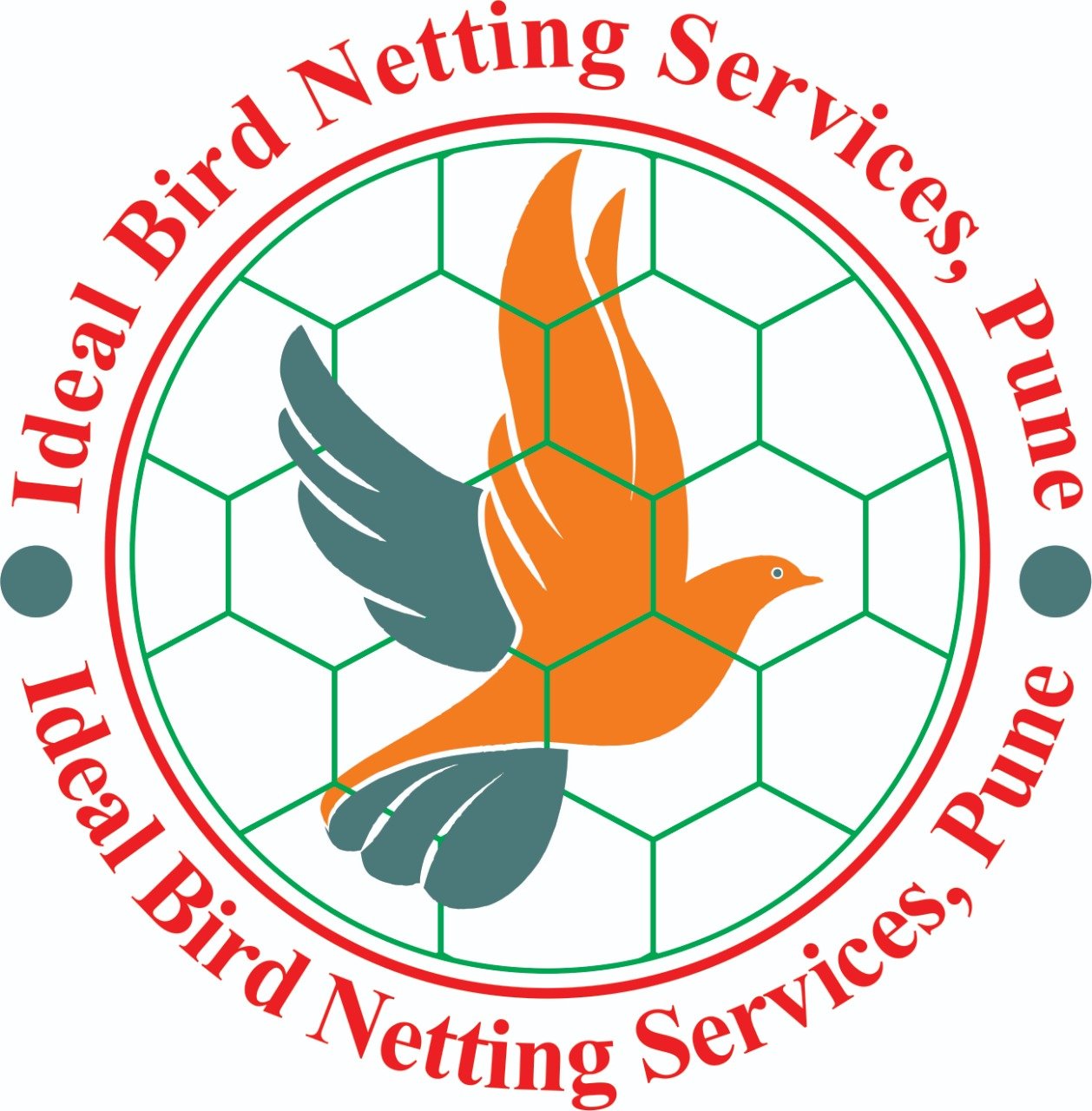
Introduction to Bird Netting
Bird netting is an essential measure employed to safeguard buildings and agricultural crops from potential damage caused by various bird species. This protective method involves using a mesh netting material that is strategically positioned to prevent birds from gaining access to specific areas. With Pune’s burgeoning urban landscape, particularly in regions like Sinhgad Road, the implementation of bird netting has gained significant traction. As more constructions and agricultural developments occur, the need to protect these spaces from avian intrusions has become increasingly pertinent.
Various types of birds, including pigeons, crows, and starlings, are often targeted due to their propensity to cause harm. These birds can not only damage structures by nesting in unwanted areas but can also lead to significant agricultural losses through seed predation and crop contamination. In urban environments, pigeons, famous for being a nuisance, frequently colonize building ledges and rooftops, contributing to unsightly messes and potential health concerns due to harmful pathogens found in their droppings. The installation of bird netting effectively mitigates these risks.
Moreover, the rising popularity of bird netting in urban locales can be attributed to both its effectiveness and its unobtrusive design. This installation process is straightforward and can integrate seamlessly with existing structures without compromising aesthetic values. As cities continue to expand, incorporating bird netting into building designs and agricultural practices becomes paramount. This approach not only protects property and resources but also encourages an environmentally responsible coexistence with wildlife. As awareness regarding the importance of bird netting escalates, it becomes vital to understand its application, types, and benefits in effectively addressing the challenges posed by urban bird populations.
Benefits of Bird Netting
Bird netting serves as a crucial preventive measure that offers numerous benefits for both residential and commercial properties. One of the primary advantages of installing bird netting is its effectiveness in preventing bird infestations. Birds, when left unchecked, can cause substantial damage to properties, creating nests that lead to debris accumulation and potential structural damage. By employing bird netting, property owners can create a barrier that deters birds from roosting or nesting in vulnerable areas, thus safeguarding their investments.
In addition to protecting property, bird netting plays a significant role in maintaining hygiene. Birds often leave droppings that can attract other pests and lead to health hazards for humans and pets. These droppings are not only unsightly but can also pose serious risks, including the spread of diseases. Installing bird netting effectively minimizes the presence of birds, thereby reducing the likelihood of droppings and ensuring a cleaner and safer environment for everyone. The maintenance of hygiene is particularly important in urban areas where high foot traffic is common.
Another noteworthy benefit of bird netting is its contribution to reducing noise pollution caused by avian activity. Birds can create substantial noise, particularly during mating seasons, which can disrupt the tranquility of homes and workplaces. By using bird netting to limit their access to certain areas, property owners can significantly reduce the noise levels, leading to increased comfort and peace within their premises.
Overall, the installation of bird netting is a proactive approach that provides substantial benefits, including effective prevention of bird infestations, protection of property, the maintenance of hygiene, and a reduction in noise pollution. These advantages highlight the importance of considering bird netting as a viable solution for managing avian issues.
Types of Bird Netting Available
When considering bird netting for various applications, it is essential to understand the different types of materials available in the market. The most commonly used bird netting materials include polypropylene and nylon. Each type possesses distinct properties, making them suitable for specific requirements.
Polypropylene bird netting is well regarded for its lightweight and robust nature. It is particularly UV resistant, allowing it to withstand the harsh effects of sunlight over time. This property makes polypropylene nets highly durable, ideal for outdoor applications. Furthermore, they come in various mesh sizes, which offer flexibility depending on the target bird species. The smaller mesh options are effective in excluding smaller birds, while larger meshes may be appropriate for larger species.
Nylon netting, on the other hand, is known for its excellent tensile strength and longevity. It is somewhat heavier than polypropylene but offers superior wear resistance. This material can endure extreme weather conditions, making it suitable for long-term installations. Like polypropylene, nylon nets are available in different mesh sizes, providing versatility for various applications such as gardens, balconies, or commercial buildings where bird control is necessary.
Additionally, some manufacturers provide composite nets that combine the benefits of both polypropylene and nylon. These nets are designed to offer enhanced durability and resistance to environmental factors, making them an attractive option for customers seeking quality and longevity in their bird netting solutions.
In selecting the most appropriate bird netting, homeowners and businesses should consider factors such as location, the type of bird species they want to exclude, and the specific environmental conditions they encounter. By understanding the types of bird netting available, informed decisions can be made to ensure effective bird control measures are implemented.
Tools and Materials Needed for Installation
Installing bird netting requires a carefully curated selection of tools and materials to ensure a successful and safe installation process. Initially, one must prioritize safety gear, which is essential when working at heights or in environments that pose risks. This includes hard hats, safety goggles, gloves, and a sturdy harness if scaffolding or ladders are involved. Ensuring personal safety cannot be overstated, as it is the first step toward effective bird netting installation.
Next, the tools required for measuring and cutting must be appropriately selected. A measuring tape is fundamental for obtaining precise dimensions of the area to which the netting will be applied. Accurate measurements will determine how much bird netting is needed, thus preventing wastage. Additionally, a utility knife or heavy-duty scissors will be necessary for cutting the netting to the required sizes. If the installation area has unique shapes or angles, a pair of angle finders may also prove beneficial.
Once the netting is measured and cut, it is crucial to have the right fasteners and anchors at hand. The selection of fasteners will depend on the installation surface, which could be concrete, wood, or metal. Common choices include zip ties, U-clips, and screws. Moreover, heavy-duty anchors will support the netting adequately, ensuring that it remains taut and secure against the elements and potential wildlife interference. In regions like Sinhgad Road, Pune, where environmental conditions can vary, using suitable materials is fundamental for longevity.
In summary, preparing for bird netting installation involves gathering proper safety gear, precise measuring tools, and robust fasteners. Each of these materials contributes significantly to the stability and safety of the installation process, ensuring that the bird netting serves its purpose effectively.
Step-by-Step Installation Process
Installing bird netting effectively requires a systematic approach to ensure optimal results. The first step in the installation process is to measure the area where the bird netting will be applied. Begin by taking precise measurements of the width and height of the space, including any projections, to determine the appropriate size of the netting needed. Accurate measurements minimize waste and ensure that the installation is as seamless as possible.
Once the measurements are finalized, the next step involves cutting the bird netting to size. It is essential to use high-quality netting material that is resistant to UV rays and suitable for the specific bird species you wish to deter. When cutting the netting, leave an additional margin of a few inches around each side to facilitate secure attachment. This precaution assists in preventing gaps where birds may penetrate.
The third phase of the process is securing the netting to surfaces effectively. Utilize appropriate fasteners, such as nylon cable ties or steel wires, to attach the netting firmly to the chosen surfaces, including walls, roofs, or frames. Start at the top, anchoring the netting in place, and work your way down to ensure even tension. It is advisable to stretch the netting taut to prevent sagging, which could create spaces for birds to exploit.
Finally, after installation, conduct a thorough inspection to ensure that no gaps remain in the netting. Pay special attention to edges and corners, as these are often the areas where birds can find access. Consider applying additional netting or reinforcement in these spots, if necessary. Furthermore, adapting the installation process to various environments, such as residential buildings or commercial properties, may require customizing the approach based on the specific conditions present.
Common Mistakes to Avoid During Installation
When undertaking bird netting installation, understanding and avoiding common mistakes can significantly enhance the effectiveness of the netting system. One of the primary errors encountered is improper measurement. Accurate measurements are essential in ensuring that the netting fits correctly and covers the intended area. Failing to account for the dimensions of the installation site can lead to gaps where birds can still access the area or cause excessive material usage, increasing costs unnecessarily. It is advisable to double-check all measurements and preferably consult a professional when in doubt.
Another significant pitfall is the use of incorrect materials. Selecting bird netting that is not suitable for the specific environment can result in quick deterioration. For instance, UV-resistant netting should be chosen when installing in outdoor areas subject to sunlight. Additionally, the installation hardware must be compatible with the chosen netting; using unsuitable anchors or fasteners can compromise the stability of the netting system. Investing in quality materials tailored for the environment will extend the lifespan of the installation and ensure effective bird exclusion.
Maintenance is often overlooked, which can impact the longevity and effectiveness of bird netting. Even with high-quality materials, neglecting to inspect the netting for wear and tear could result in birds breaching the system. Regular checks should be conducted to identify any damage or sagging, allowing for timely repairs. Moreover, establishing a maintenance schedule can help prevent issues arising from debris accumulation, which can hinder the netting’s performance.
Safety protocols are crucial during installation. Neglecting to use appropriate safety gear or not securing the installation area can result in accidents, jeopardizing the installer’s safety and the overall project. Always prioritize safety by utilizing harnesses, gloves, and helmets, and secure the surroundings to mitigate risks associated with working at heights or in dangerous conditions. By addressing these common mistakes, one can ensure a successful bird netting installation.
Maintenance Tips for Bird Netting
Proper maintenance of bird netting is crucial to ensure its longevity and effectiveness in deterring birds. Regular inspections should be conducted to identify any signs of damage or deterioration. Such inspections should occur at least once a month, particularly during the rainy season when wear and tear can accumulate more quickly. Pay particular attention to any sagging areas, holes, or tears, as these can compromise the structural integrity of the netting.
Cleaning the netting is another vital part of maintenance. Over time, debris such as leaves, dirt, and bird droppings can accumulate on the surface, potentially leading to blockages or premature deterioration. A gentle wash with water and a soft brush can help remove any build-up. It is advisable to avoid harsh chemicals as they may degrade the netting material. Ensure that the netting is allowed to dry thoroughly after cleaning to prevent mold and mildew growth.
If damage is detected during inspections, timely repairs should be executed to maintain the effectiveness of the bird netting. Small tears can often be mended using a specialized bird netting repair tape or by sewing the edges back together if the material allows. For larger holes or heavily damaged areas, consider replacing the affected section to avoid attracting more birds. It is recommended to keep spare pieces of netting on hand for efficient repairs, thereby minimizing disruption in bird control efforts.
Incorporating these maintenance tips into your routine will significantly enhance the durability of your bird netting, ensuring it continues to serve its purpose effectively and remains an efficient barrier against pests. Regular attention to these factors will safeguard your investment and improve overall results in bird management.
Local Regulations and Considerations in Pune
When it comes to bird netting installation in Pune, particularly in the Sinhgad Road area, adherence to local regulations is essential for a successful project. The city has specific guidelines that must be followed, ensuring the safety of both residents and the environment. One of the primary considerations is obtaining the necessary permits for installation. Depending on the scope of the project—whether it be for residential or commercial properties—property owners may need to approach local authorities to secure these permits. This preemptive measure can help avoid potential fines and project delays.
Additionally, it is crucial to be aware of safety regulations regarding bird netting installation. The use of proper materials is paramount, as they must meet the quality standards set by local governing bodies. The netting should be durable, UV-resistant, and capable of withstanding various weather conditions prevalent in Pune. Furthermore, appropriate installation techniques should be observed to prevent any accidents or complications arising from poor practices.
When considering hiring professional services for bird netting installation, it is advisable to conduct thorough research on local providers. Checking credentials and certifications is vital, as this ensures the professionals possess the necessary skills and knowledge to carry out the job safely and effectively. Reviews and testimonials from previous clients can provide insight into the reliability and quality of the services offered. Also, obtaining multiple quotes can help in making an informed decision regarding pricing and service offerings.
By adhering to local regulations and carefully considering these factors, residents of Sinhgad Road, Pune, can achieve an effective bird control solution that is both lawful and efficient. This proactive approach will lead to successful bird netting installation while promoting a harmonious coexistence between nature and urban living.
Conclusion and Final Thoughts
Bird netting installation is a crucial measure for property owners looking to safeguard their spaces from the perils of avian intrusions. In urban settings like Sinhgad Road, Pune, where the natural habitat of birds frequently intersects with human spaces, the importance of effective bird control cannot be overstated. Not only does bird netting help to protect buildings and their aesthetics, but it also plays an essential role in preserving public health by minimizing the risks associated with bird droppings, such as disease transmission and structural damage.
Moreover, choosing the right type of bird netting tailored to specific needs can further enhance the effectiveness of this preventive measure. Property owners must consider factors such as the type of birds they are dealing with, the architectural features of their buildings, and the desired lifespan of the chosen netting. Proper installation is paramount, as even the best netting can fail if not applied correctly. Therefore, seeking professional assistance or thoroughly researching installation techniques can lead to more satisfactory outcomes.
As cities continue to grow and evolve, the relationship between wildlife and urban environments will also change. Being proactive in implementing bird netting solutions not only protects individual properties but also contributes to more harmonious coexistence with the local avian population. By taking these steps, property owners in Sinhgad Road, Pune can ensure that their homes and businesses remain safe from the challenges posed by birds. As a result, effectively managing bird presence is not just a matter of personal preference; it is an essential aspect of responsible property management that should be taken seriously.

